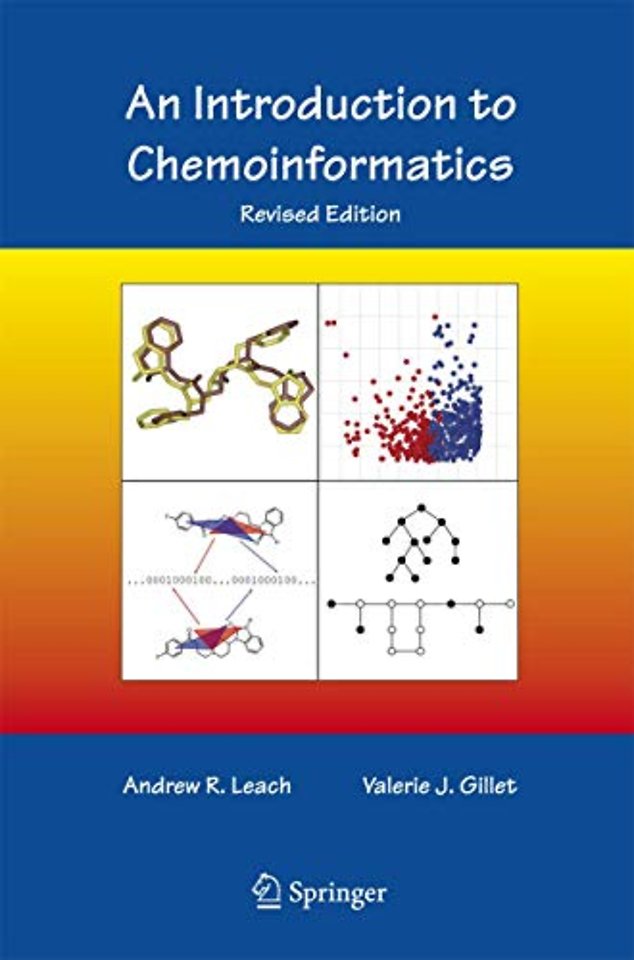An Introduction to Chemoinformatics
Samenvatting
This book aims to provide an introduction to the major techniques of chemoinformatics. It is the first text written specifically for this field. The first part of the book deals with the representation of 2D and 3D molecular structures, the calculation of molecular descriptors and the construction of mathematical models. The second part describes other important topics including molecular similarity and diversity, the analysis of large data sets, virtual screening, and library design. Simple illustrative examples are used throughout to illustrate key concepts, supplemented with case studies from the literature.
Specificaties
Inhoudsopgave
1: Representation and Manipulation of 2D Molecular Structures. 1. Introduction. 2. Computer Representations of Chemical Structures. 3. Structure Searching. 4. Substructure Searching. 5. Reaction Databases. 6. The Representation of Patents and Patent Databases. 7. Relational Database Systems. 8. Summary.
2: Representation and Manipulation of 3D Molecular Structures. 1. Introduction. 2. Experimental 3D databases. 3. 3D Pharmacophores. 4. Implementation of 3D database Searching. 5. Theoretical 3D Databases. 6. Methods to Derive 3D Pharmacophores. 7. Applications of 3D Pharmacophore Mapping and 3D Database Searching. 8. Summary.
3: Molecular Descriptors. 1. Introduction. 2. Descriptors Calculated from the 2D Structure. 3. Descriptors Based on 3D Representations. 4. Data Verification and Manipulation. 5. Summary.
4: Computational Models. 1. Introduction. 2. Historical Overview. 3. Deriving a QSAR Equation: Simple and Multiple Linear Regression. 4. Designing a QSAR 'Experiment'. 5. Principal Components Regression. 6. Partial Least Squares. 7. Molecular Field Analysis and Partial Least Squares. 8. Summary.
5: Similarity Methods. 1. Introduction. 2. Similarity Based on 2D Fingerprints. 3. Similarity Coefficients. 4. Other 2D Descriptor Methods. 5. 3D Similarity. 6. Summary.
6: Selecting Diverse SetsOf Compounds. 1. Introduction. 2. Cluster Analysis. 3. Dissimilarity-Based selection methods. 4. Cell-Based Methods. 5. Optimisation Methods. 6. Comparison and Evaluation of Selection Methods. 7. Summary.
7: Analysis of High-Throughput Screening Data. 1. Introduction. 2. Data Visualisation. 3. Data Mining Methods. 4. Summary.
8: Virtual Screening. 1. Introduction. 2. 'Drug-Likeness' and Compound Filters. 3. Structure-Based Virtual Screening. 4. The Prediction of ADMET Properties. 5. Summary.
9: Combinatorial Chemistry and Library Design. 1. Introduction. 2. Diverse and Focussed Libraries. 3. Library Enumeration. 4. Combinatorial Library Design Strategies. 5. Approaches to Product-Based Library Design. 6. Multiobjective Library Design. 7. Practical Examples of Library Design. 8. Summary. Appendix 1: Matrices, Eigenvectors and Eigenvalues. Appendix 2: Conformation, Energy Calculations and Energy Surfaces. Further Reading. References. Index.

